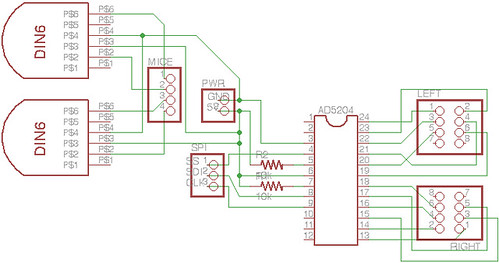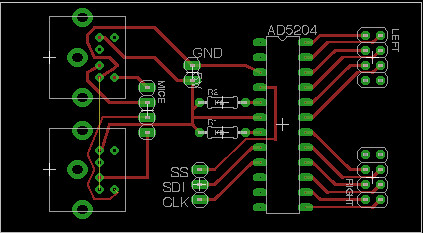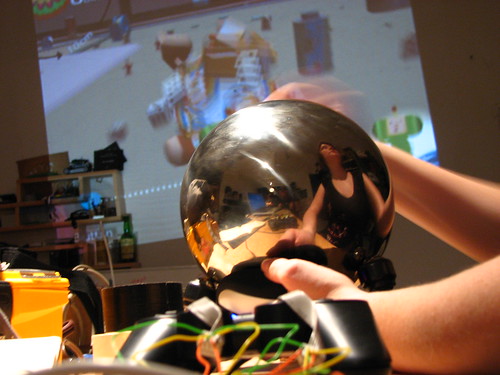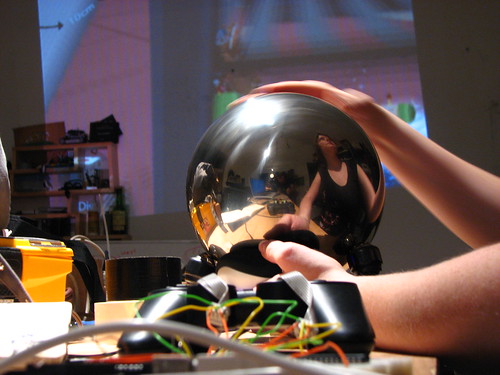
A long time ago, in a galaxy identical to this one, I wanted to make a life-sized Katamari, and use it to play Katamary Damacy on PS2. My friend Eric Skiff shot a video, and while it’s not quite a polished project, I decided it’s time to share it with the world.
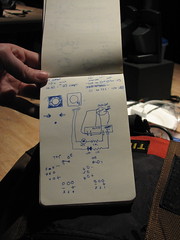
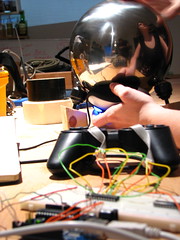
Here’s the wiring schematic. I realize it doesn’t make a lot of sense. Basically the each mouse (one for each joystick) is wired up to the Arduino, and there’s a handy PS/2 library for Arduino which makes it easy to work with. It was also the first Arduino program I wrote after “make an LED blink.”
I used an AD5206 digital potentiometer chip, although the 5204 would work as you only need four channels (left x, left y, right x, right y). It’s a pretty simple circuit, and maybe when I have some time I’ll redo it to use an AVR and a single power source. It was a fun first electronics project.
Originally I wanted to use one of those giant yoga balls, to really get the scale. But it turns out those don’t roll very well on ball bearings. Luckily Adam had one of those mirror balls folks put in their gardens. Or at least I assume they do, no one I know has a big enough yard to put lawn ornaments in. While somewhat smaller and less impressive, it rolls much more easily.
This project wouldn’t have been vaguely possible without help from the fine folks at NYC Resistor, who very patiently explained things like “why do I need a pull up resistor?” Extra thanks to Eric who documented my work (something I forget to do) and Adam who helped me with EAGLE. Sadly I never did get around to properly etching a board for it (but I did have a lot of incorrectly etched boards).
You can find the music from the video at http://glitchnyc.com/music/
